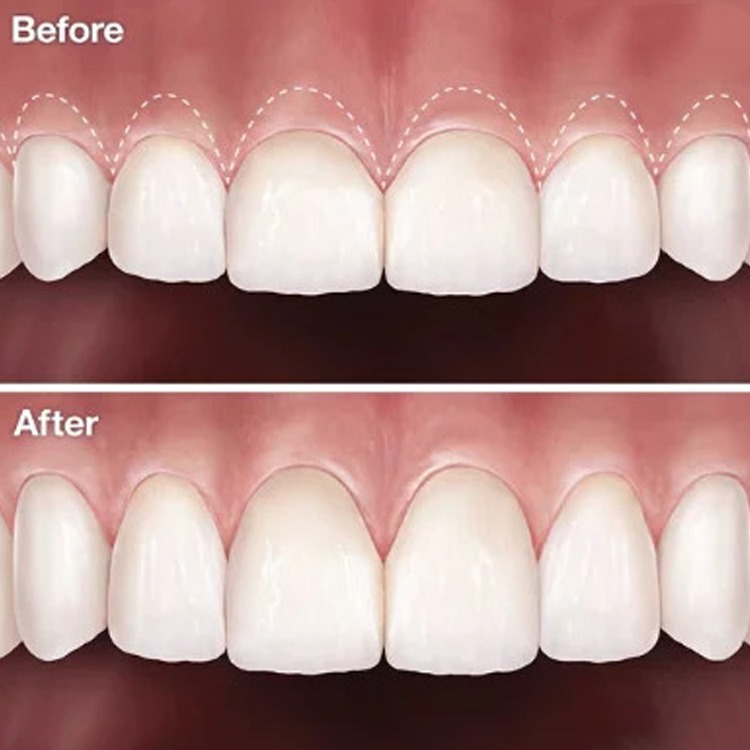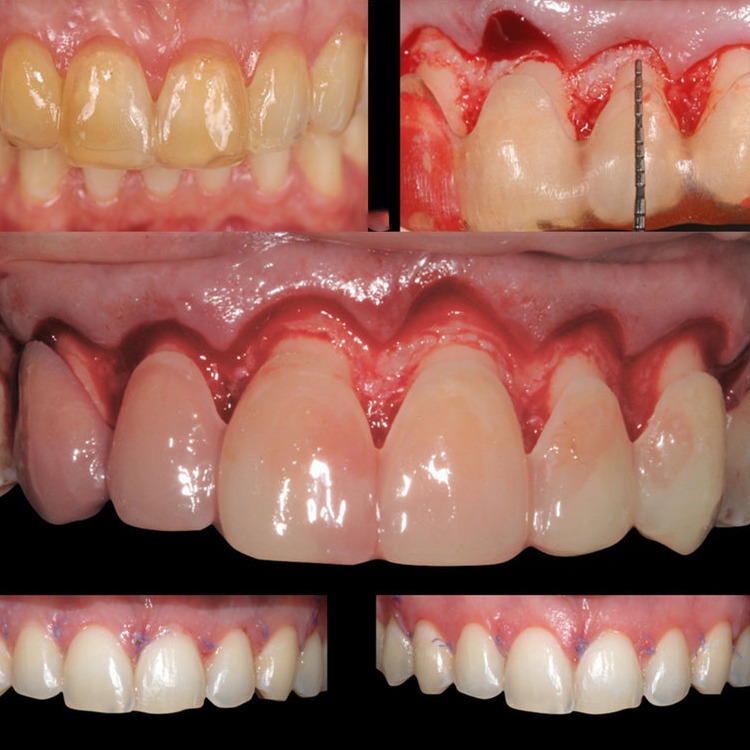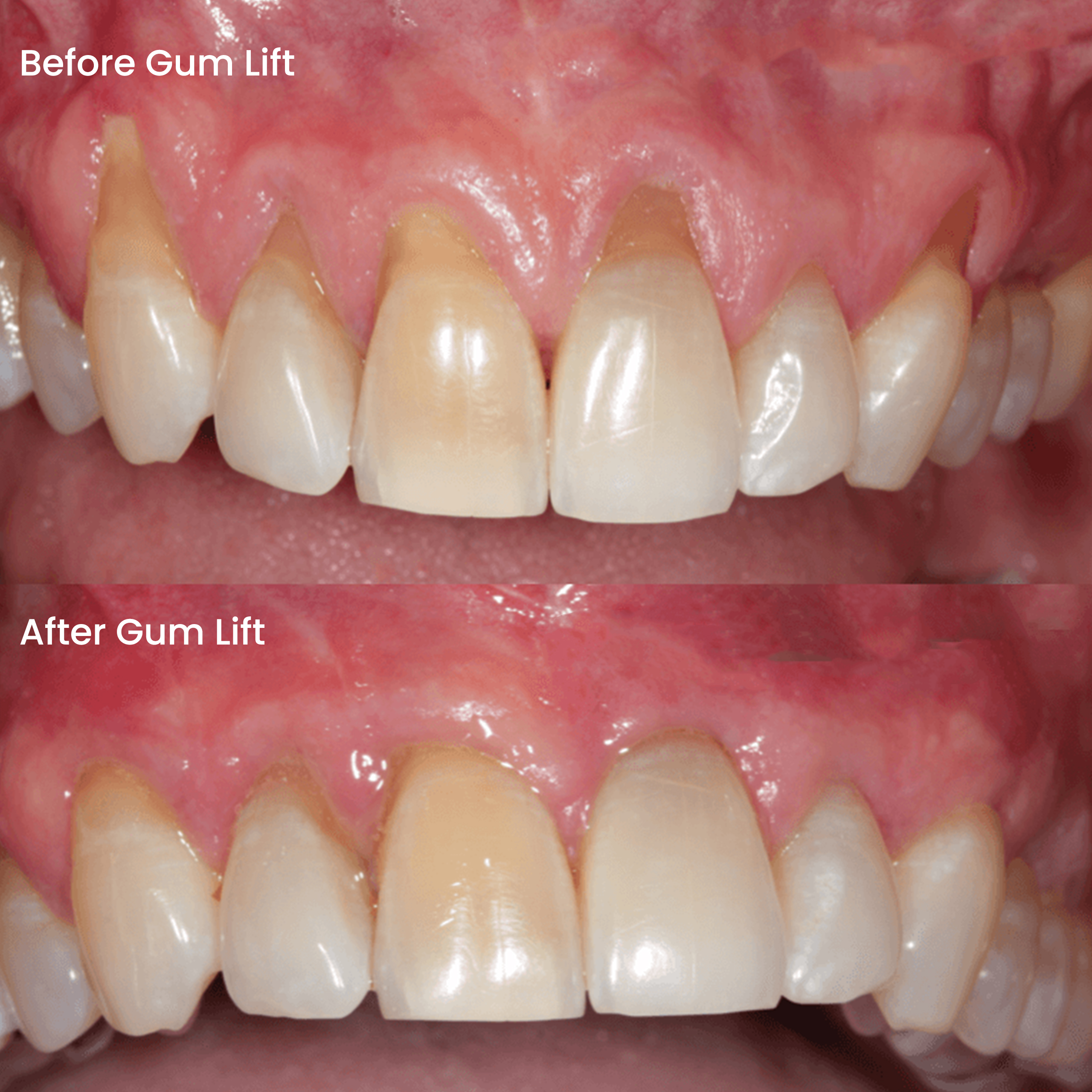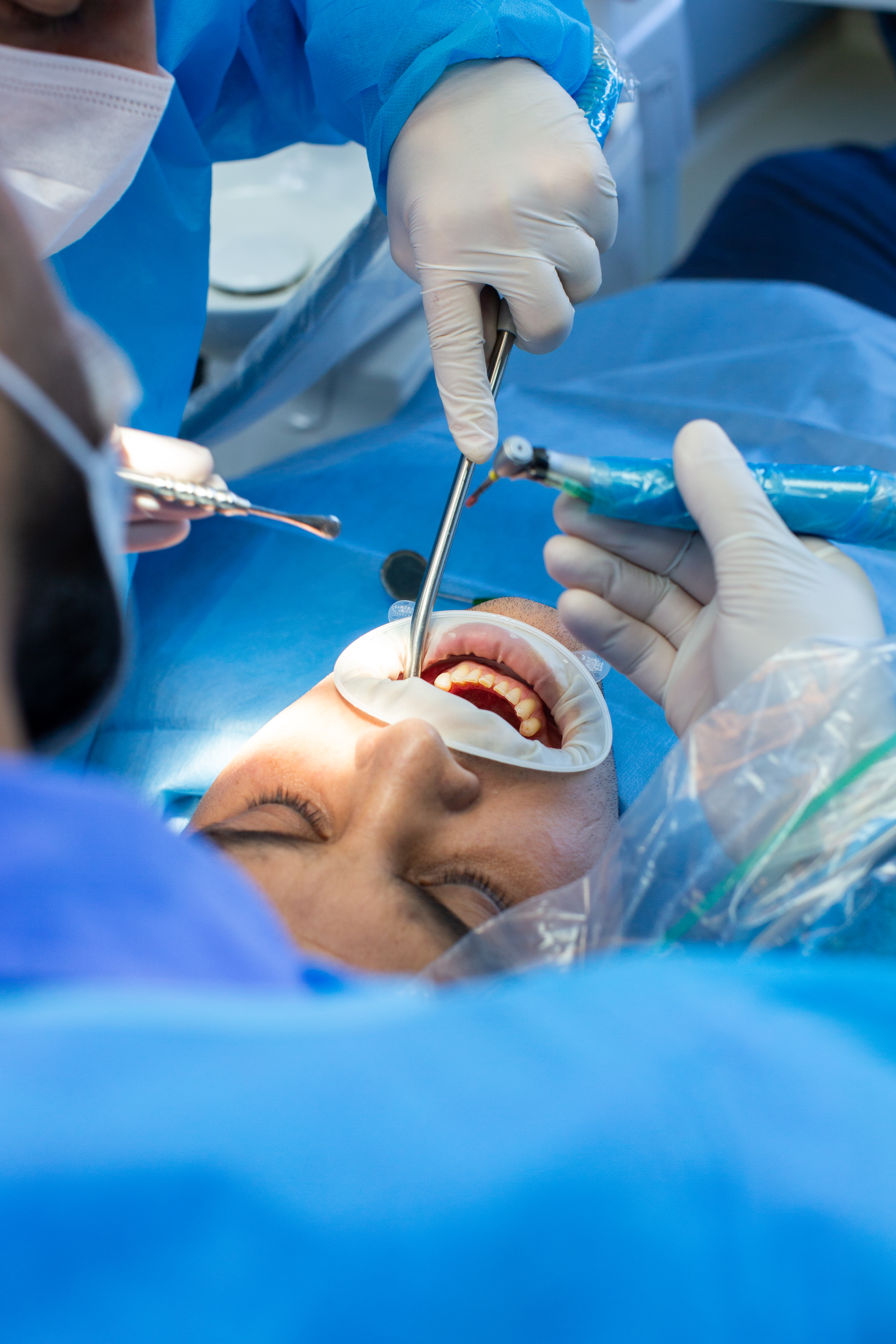Gum surgery
Many of us have gum problems but we are unknown about it as these gum problems are deceptive. We don’t get any kind of pain in 95% of cases. Some get mild pain which gets resolved at its own or by some medications. When our teeth becomes loose we consider it as age related but its actually due to gum problems.


About
GUM DISEASE TREATMENT
Gum treatment and surgery becomes necessary if you suffer from gum diseases. The gum is responsible for holding the teeth in its place. If the gum itself becomes unstable, it can eventually lead to tooth loss. Gum disease treatment may be nonsurgical or surgical, depending on the stage of disease and your oral and overall health.
GUM TREATMENT AND SURGERY PROCEDURE
NON-SURGICAL TREATMENTS
DENTAL SCALING:
Dental scaling is a routine dental cleaning. In this procedure dentist removes plaque and tartar from your teeth surfaces. People who have gingivitis (1st stage gum disease) can often reverse it with proper dental scaling and improved oral hygiene.
ROOT PLANING:
A deep dental cleaning is done which reaches deep beneath your gum line to remove plaque and tartar on your root surfaces. Dentist may also introduce antibiotics into the teeth pockets to prevent bacterial attacks.


SURGICAL TREATMENTS
FLAP SURGERY:
This is a common surgical method to remove excess bacteria formation on the teeth. There are instances where the bacteria forms in between the gums and the teeth. To remove that, the gums are flapped up and bacteria are removed.
CROWN LENGTHENING:
This is a type of cosmetic surgery too. The gums that have grown lengthier than the teeth are cut off to make the teeth look longer. Even in some cases if patients is having dental crown placement but the tooth height is not enough for their placement, than patient may have to opt for crown lengthening.
GUIDED BONE REGENERATION:
This is done when the bone that surrounds the root of the teeth gets damaged. Many patients lack vertical or horizontal bone volume. If patients needs implants in such case than this technique of GBR is used to provide space for new bone, through the use of barrier membrane.
GINGIVECTOMY:
One common type of gum surgery is gingivectomy , which involves removing excess gum tissue to reduce pockets between the teeth and gums. This can help prevent further damage from gum disease.
FRENECTOMY:
It’s a minor surgical procedure that removes or modifies a frenum, a small piece of tissue in the mouth that connects two structures. It’s often performed to correct an unhealthy frenum that’s causing problems like speech difficulties, restricted movement, or feeding issues.
BENEFITS
REDUCED RISK OF INFECTION:
Gum disease is a serious dental infection that can lead to the loss of teeth. If teeth are cleaned regularly from your dentist than there is less chance of inflammation which prevents more severe forms of disease from developing like periodontitis.
REDUCED RISK OF TOOTH LOSS:
Gum surgery is performed to treat advanced periodontal disease (periodontitis). This chronic infection damages the tissue and bone surrounding your teeth, which can lead to tooth loss if left untreated.
IMPROVED ORAL HEALTH:
Gum surgery can treat gum disease and prevent further damage to your teeth.
IMPROVED SMILE APPEARANCE:
Gum surgery can correct issues like receding gums or a gummy smile.
REDUCED TOOTH SENSITIVITY:
Gum surgery can cover exposed tooth roots, which can reduce sensitivity to hot or cold temperatures.
BOOSTED CONFIDENCE:
A healthy smile can positively impact your self-esteem and restore your confidence.
Thus , gum treatment and surgery is a great solution for periodontal diseases, which may be hampering your health and confidence. Schedule an appointment today itself.

